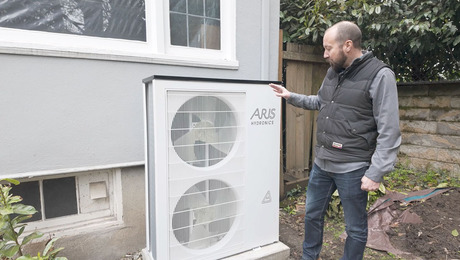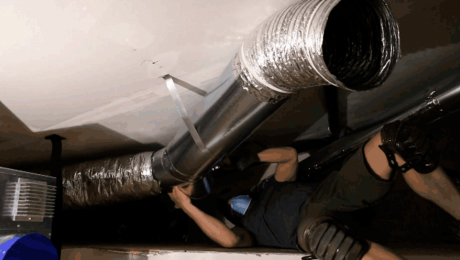Building a Vaulted High-Performance and Foam-Free Roof Assembly
Josh Salinger shows us how to create more space and vent a roof, and do it all with a reduced environmental footprint.
Josh Salinger, owner of Birdsmouth Design-Build, is on-site in Portland, Ore., to discuss the vaulted high-performance and foam-free roof assembly on their latest ADU build.
Vaulted roofs are a popular option because they create usable living space where an attic would usually be. Typically, plastic forms such as spray-foam insulation or rigid foam are used to deter condensation and moisture issues in a roof assembly.
In this video, Josh shares his plastic-free solution to manage moisture and allow for full-depth insulation with proper venting while creating a high-performance vaulted roof assembly.
Read more about all the details of this roof assembly in Josh’s article A New Take on Insulating a Roof.
RELATED LINKS






























View Comments
R-value?
Curious about the nailing spacing for the 2x4s on top of the roof rafters. These will be transferring the shear load from the sheathing. Presumably framing nails at some spacing. I don't think it's handled in the prescriptive code so you would need an engineer to calculate.
I like it. It's simple, uses common materials/techniques, etc.
One thing it doesn't do is break the thermal bridges through the assembly.
I'll have to think about that one some more.
Great assembly. Is this restricted to specific climate zones? I’m specifically asking about feasibility in the hot humid south (CZ 2A)
Thank you for the great video!
Niko
This is similar to the way we used to do vented roofs in the assemblies in the old days, with the improvement in permeable barriers. Unfortunately where I live in Massachusetts (climate zone 5) we would not be able to achieve the required R49 roof insulation with 2x12 roof rafters. So in our climate, we generally accept the compromises of using foam insulation to achieve the necessary insulation requirements in roofs and walls.
On the other hand, perhaps our requirements will all change as it’s getting awfully warm in the winters here due to the unending rape of our planet.
So when the rafter cavities are filled with dense-pack cellulose, what's stopping the Tyvek on top from bulging out against the sheathing and blocking the ventilation? Seems like it would be hard to get the Tyvek tight enough to prevent that from happening.